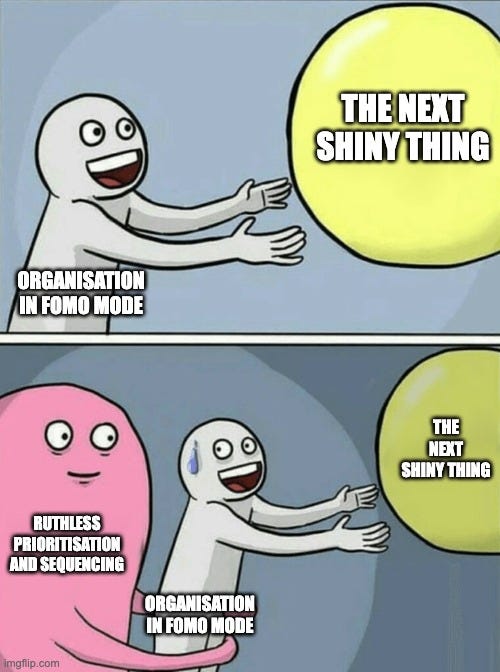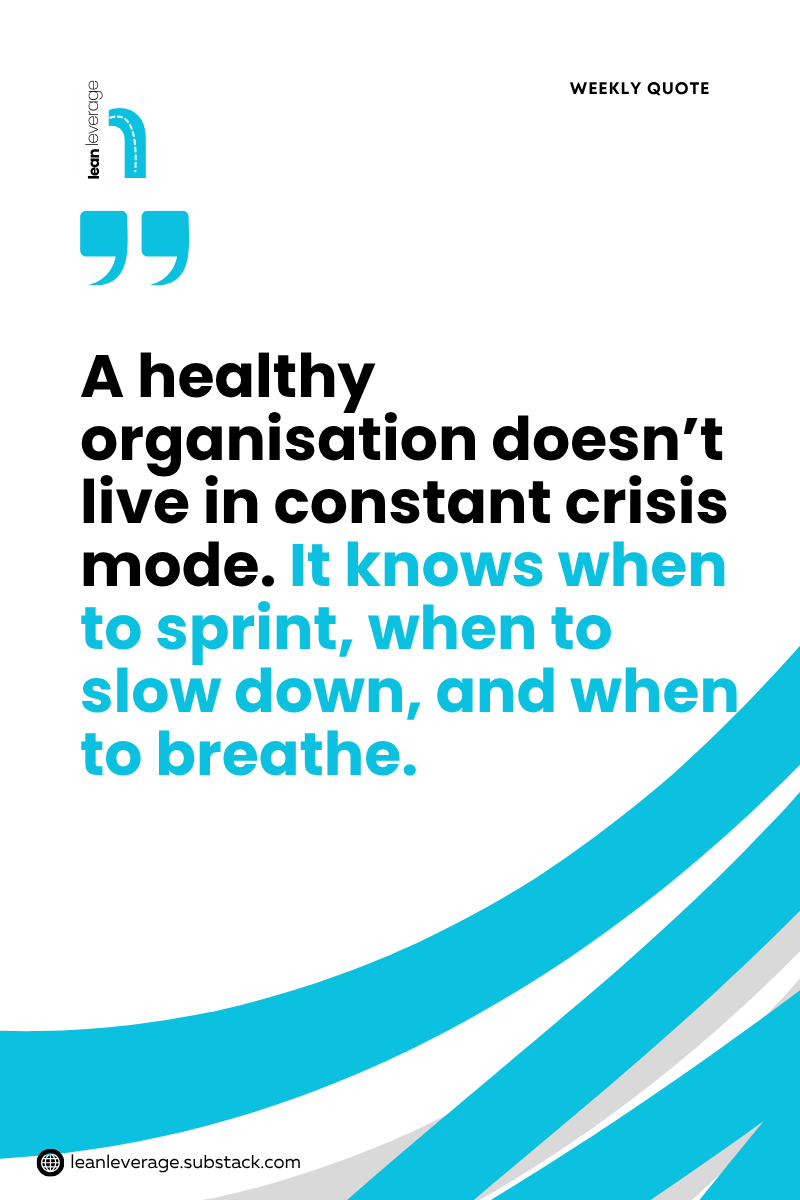Urgency Is Supposed to Be the “Exception”, Not the "Default".
How do you build a culture where urgency is the exception, not the default setting?
Dear friends,
Let’s start today’s post with this hard truth: not everything can be priority number one.
Read that again if necessary.
But if you’ve worked in any modern organisation, you’ve probably seen the opposite. Every single initiative is tagged as “critical”, every project is classed as “high impact”, and every deadline is “urgent”.
Imagine an orchestra playing ten different songs all at once. You’re definitely getting noise from that, not music.
KPIs are important, projects are important, but when everything plays at the same volume, the melody of Continuous Improvement gets lost in the noise.
When Everything Feels Urgent
In my experience working within the improvement space, I’ve had numerous conversations with people and leaders seeking to enhance their service from end to end.
Meetings are held, whiteboards are filled, and several ideas are raised, which, to be fair, is a good thing. It shows that people care about the organisation and want to make things better.
The ideas usually sound impressive too: cost savings, workforce culture, efficiency gains, digital transformation. But somewhere between the excitement and the execution, something vital goes missing: sequencing.
Everyone wants everything done at once.
No one is asking the most important question: “What are we taking forward first, then what next?”
In Yoruba, there’s a popular proverb that translates to “Whoever pursues after two rats simultaneously, will catch none”.
That’s exactly what happens when everything is “equally important”.
Teams spread themselves thin, meetings turn into firefighting sessions, people moan about the same problems week after week, and quick fixes replace sustainable solutions.
In the end, there’s a lot of movement, but very little or no progress.
Why Everything Becomes “Urgent”
Over time, I’ve noticed a few patterns: the reasons why organisations fall into this “permanent urgency” trap. Here are three (and a half) of the usual suspects:
Fear of Missing Out (Organisational FOMO)
Everyone’s chasing the latest shiny thing, AI, digital dashboards, new workflows, etc., just because “another team or organisation is doing it.”
We fail to understand that not every improvement initiative is meant for your context. Sometimes the most strategic move isn’t to copy, but to pause, understand your own process first and adapt what actually fits.Lack of Prioritisation Discipline
Many teams have brilliant ideas but poor sequencing.
They don’t separate the strategic must-dos from the nice-to-haves.
So instead of a clear focus, you get a crowded to-do list and burnt-out staff.A Culture of Constant Firefighting
In some workplaces, urgency has become the norm.
If a meeting isn’t labelled “urgent”, it feels unimportant.
But this constant state of alert kills reflective thinking, the type of thinking that improvement actually requires. People get trapped reacting instead of planning.
½. External Pressure (a.k.a. Government Policy)
Sometimes, urgency doesn’t come from within; it’s imposed from “the ogas at the top”.
It’s just the way the cookie crumbles.
When a new policy or mandate drops, organisations have little choice but to comply, and understandably so. No one wants to be on the wrong side of a regulatory requirement.
Unfortunately, this is beyond any individual, and people often hope there are fewer of these kinds of projects, so the organisational agenda doesn’t get hijacked.
The Way Forward: Focus Over Frenzy
So, what’s the way out?
How do you build a culture where urgency is the exception, not the default setting?
Prioritise Ruthlessly
I think every team needs a prioritisation framework, or perhaps a “stop doing” list. You can’t improve everything at once. Decide what truly matters now, and what can wait. Progress requires sequencing.It’s not about doing more; it’s about being brave enough to say “not yet” when required.
Protect Improvement Time
Improvement isn’t what you do “when there’s time.” It creates the time.
Block improvement huddle time in your calendar, treat it as sacred, and defend it like your favourite jollof recipe.
If you don’t protect time for improvement, the urgent will always steal it.Lead by Example
Leaders set the tone.
When leaders treat every issue as a 999 emergency, teams stop believing in priorities.
But when leaders show restraint, asking “what’s truly critical?” that calm spreads across the organisation.
½. Manage the Uncontrollable (The External Pressures)
A new government policy drops, regulators shift direction, or national targets change overnight. You can’t ignore it, but you can plan for it.
Build a small “contingency buffer” into your improvement plans. Ensuring you have some room to flex without abandoning your original focus.
Wrapping Up
Urgency was never meant to be the culture; it was meant to be the exception.
A healthy organisation doesn’t live in constant crisis mode. It knows when to sprint, when to slow down, and when to breathe. But too many teams have turned urgency into a lifestyle, a badge of honour even. “We move fast here,” they say. Yes, but to where?
When everything is urgent, people stop thinking; they just react. Improvement becomes impossible because everyone is too busy “putting out fires” to ask where the smoke is coming from.
Continuous Improvement thrives in calm, structured environments, not chaotic ones. It needs time to observe, reflect, test, and refine. You can’t kaizen your way through panic.
So please, let urgency take its rightful place as the exception, not the default.
See you next week,
Tomiwa Femi-Philips
Lean Process Improvement Enthusiast





Love this!
Most of the burning out and changing priorities comes from company culture. I see it in my company: constant changes from the bosses create so much friction that it’s often impossible to move forward effectively.